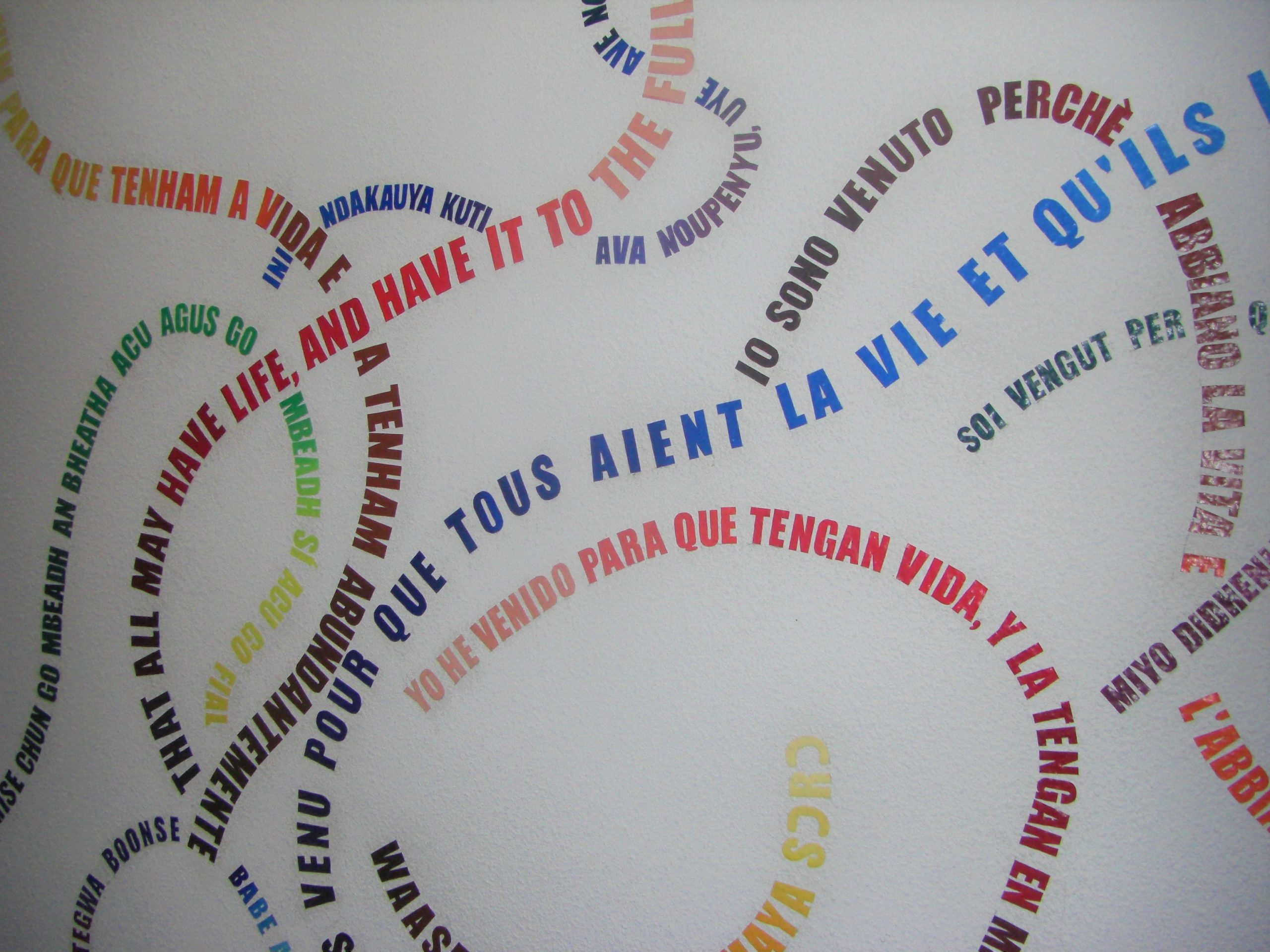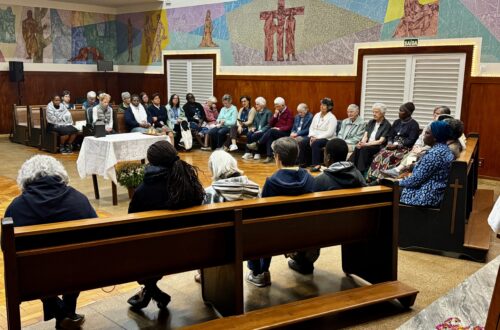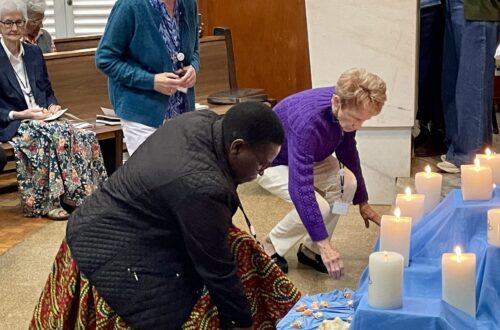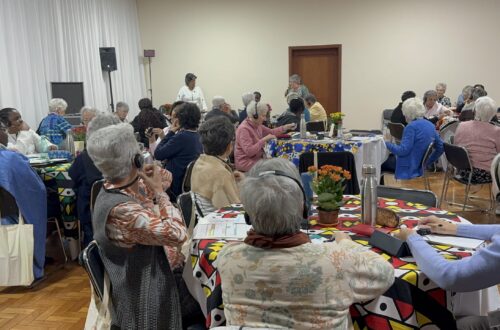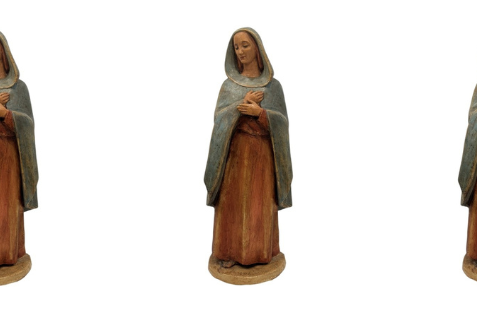Heritage and Spirituality – Kathleen Connell, RSCM
This month of February, we remember and celebrate the 173rd Anniversary of the Foundation of the Religious of the Sacred Heart of Mary. Many of you, who will be reading this article, are already familiar with our congregation, our sources, our texts and traditions. But those 173 years deserve retelling. It is our graced story.
The RSHM were founded by a French priest, recognized by the Church as the Venerable Jean Gailhac, but affectionately called “Gailhac” by the RSHM family. We were founded in France, in the middle of the nineteenth century, on February 24,1849 to be exact – the year of the California gold rush and the year after Karl Marx wrote The Communist Manifesto.
Gailhac had been ordained at the age of twenty-four and was immediately offered a position teaching Philosophy at the diocesan seminary, but Gailhac felt a strong call to serve the poor. So, when the chaplaincy position became available in the public city hospital in his native city of Beziers, Gailhac asked his bishop to mission him there. “The Hotel Dieu”, as it was called, was filled with poor, sick people and, in Gailhac’s day, even some old soldiers from Napoleon’s army. Try to image the sights, the sounds and the smells of a mid-19th century public hospital before the availability of antiseptics, anesthesia and pain killers! Most people who were admitted to this hospital died there. For twenty-one years, Gailhac ministered there – consoling the sick and accompanying the dying through death to Life.
There was one group in the hospital that especially captured Gailhac’s attention and compassion. These were the women who continually came into the hospital, were treated and went back out onto the streets. They later returned to the hospital, were treated and went out again in a seemingly endless cycle. These were the women who earned their living, and in many instances supported their children, through prostitution. Gailhac decided as a young priest to do something about their situation. From his own meager chaplain’s salary, he paid for the support of thirteen of these women in a Refuge in Montpellier, a major city at some distance.
Eventually, Gailhac set up a Refuge for women (a shelter, as we might call it today) in Beziers in 1834. Here, the women had a safe place in which they could begin to turn their lives around and break out of the cycle of returning to the streets. Here, they were encouraged by the assurance of God’s love for them and empowered by learning an alternative way of supporting themselves. So, in the Refuge, for example, these women were taught embroidery. They had a skill. They had another way to support themselves.
Gailhac had to struggle to find women to staff this Refuge. He employed a group of lay women for a time; then he tried involving three different religious congregations. Finally, in 1849, Gailhac founded the Religious of the Sacred Heart of Mary (RSHM) for this purpose – initially, to staff the Refuge for former prostitutes and to run the orphanage that had spontaneously accompanied the founding of the Refuge.
Our founding community, those who came together in 1849, was made up of six women who were very different from one another. Our foundress, M. St. Jean Cure Pelissier was a wealthy woman, forty years of age and recently widowed. Her husband had been Gailhac’s best friend. There were two women 23 years old – one the ward of her lawyer-brother, the other, a housemaid from Beziers. There was the 33
year old headmistress who had begun a small local boarding school. She came from a family of educators. Then there were two women, in their mid-thirties, always ready to help when and where they were needed.
Our community took root in this diversity. Within a few years, Irish women came to join them, then Portuguese, then Americans and Brazilians and English and Italians and Scots and Colombians and Mexicans and Africans and other nationalities. We have always prized this diversity. In the early RSHM foundations outside of France, it was the practice to create local communities with religious from every nationality in the Institute, and we are returning to that ideal by creating interprovincial, international RSHM communities throughout the world. Our Constitution reminds us: “Inserted in a diversity of cultures, we remain faithful to the international character of the Institute, a gift from our origins.” (#40)
The women who entered the RSHM initially, soon discovered that they did not have the gifts to work directly with former prostitutes, and that reality led Gailhac to rethink and widen his purpose for the foundation of the Institute. While respecting the gender constraints of his day, Gailhac expressed the Congregation’s mission in the broadest possible way – that the RSHM were founded to embrace ALL the works of zeal that could contribute to the salvation of women of ALL classes. I think that one of Gailhac’s favorite words must have been ALL – inclusive, expansive, ALL the works of zeal, ALL the classes of society as the needs were recognized and as the sisters had the gifts to deal with these needs.
Consequently, it was not surprising that in 1851, a boarding school was established at the Motherhouse in Beziers, our first school. There was certainly a need in French society for the education of girls and young women. The laws were very favorable for the establishment of such schools, and the Church was very anxious that the education given to girls and young women be Catholic. And so, a boarding school developed, primarily for middle-class French girls, but international from the very beginning. We had students from Spain in that first boarding school and within a short time, the headmistress, as in many cases, was Irish.
On the grounds of the “Motherhouse,” a large structure with various wings and courtyards, we had the boarding school, but we also still had the transformed Refuge, now more preventive in purpose, accepting teenagers who would have been on the road toward prostitution had they not had special care. We called this the Preservation. We also had on the same grounds, the orphanage for poor children, and next to that, a small dispensary for the medical needs of the poor in Beziers. The religious community lived in the midst of these groups.
It was very important for Gailhac that the needs of all the classes were somehow met and linked. Tuitions from the boarding school supported the Preservation and the orphanage. The same sisters who taught in the boarding school would find themselves working in the Preservation or the orphanage, linking the three works, giving the example of right relationships and witnessing to the fact that the dignity of all was promoted.
What unified these many diverse works with all classes was the Faith Vision of our founder. He insisted
that despite all the diverse activity, there was only one WORK – the work of redemption, and that the sisters shared in the life-giving mission of Jesus Christ. From this vision comes the RSHM motto written in Latin on the crosses of the sisters – Ut Vitam Habeant, which describes Jesus’s mission in his own words: “I have come that they (ALL) may have LIFE.” (John 10:10)
